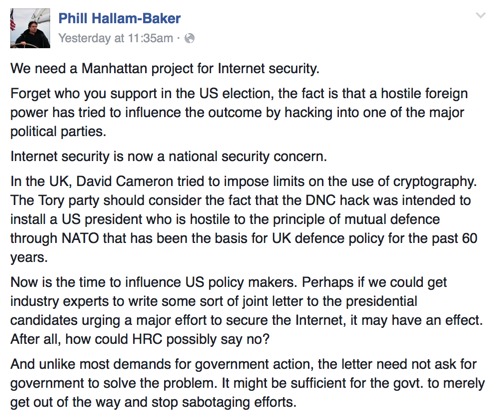Hacking
Anatomy of a successful phishing attempt
Earlier this year the Exploratorium was the victim of a phishing attack. They’ve posted an article on what happened and how they discovered and dealt with the issue.
But they didn’t just report on the attack, they dissected it. And, as is appropriate for a organization with a mission of education, they mapped out what they discovered during the investigation.
There are a couple of things that stand out to me about this attack. One is that of the more interesting pieces to me is that there was a delay between the compromise and the start of the attack. The Exploratorium calls it “the pivot” and describes it as the hacker deciding what to do next. The second is that the phisher actively interacted with the victim’s account. All new mail was sent to the trash automatically so she wouldn’t see incoming mail. Some mail was actively replied to so more people would click on the message. The phisher took steps to retain access to the account for as long as possible.
One thing that the Exploratorium didn’t see was any actual access to Exploratorium files or information. That may be because the Exploratorium itself wasn’t the target. Once a phisher / hacker has access to the email account, they have access to almost everything in your online life: calendars, bank accounts, credit accounts, the list goes on. Email addresses are our online identity and getting access to the address can open access to so much more.
Quite frankly it can happen to any of us. Earlier this week we received a phishing message that looked very plausible. It came from a law firm, mentioned a subpoena and even had an attachment personalized to our company. The attachment wasn’t opened so we were fine, but I can see how that kind of email might trick someone into getting infected.
We all need to be careful online. Email is a wonderful thing, but it’s insecure. It’s a great way for criminals to get into our space and wreck havoc on our computers and our lives.
Yahoo collaborating with US intelligence agencies
Today it was revealed that Yahoo has been scanning people’s email for the federal government.
Read MoreInternet security is national security?
This popped up on my FB feed yesterday.
What say you? Do we need to create a major effort to improve online security? What challenges do you see to making it work?
Edit: After I published this, I found an article stating that 3.7 million people had their personal health information compromised in a recent attack.
Another security problem
I had hoped to move away from security blogging this week and focus on some other issues. But today I see that both CAUCE and John Levine are reporting that there is malware spam coming from a Cheetahmail customer.
Looking at what they shared, it may be that Cheetahmail has not been compromised directly. Given mail is only coming from one /29, which belongs to one customer it is possible that only the single customer account has been compromised. If that is the case, then it’s most likely one of the Cheetahmail users at the customer got infected and their Cheetahmail credentials were stolen. The spammer then gained access to the customer’s Cheetahmail account. It’s even possible that the spammer used the compromised customer account to launch the mail. If this is the case, the spammer looked exactly like the customer, so most normal controls wouldn’t have noticed this was a spammer.
This highlights the multiple vectors these criminals are using to gain access to ESPs and the mailing systems they use. They’re not just trying to compromise the ESPs, but they’re also attempting to compromise customers and access their accounts so that the spammer can steal the ESPs hard won and hard fought sending reputation.
Everyone sending mail should be taking a long, hard look at their security. Just because you’re not an ESP doesn’t mean you aren’t a target or that you can get away with lax security. You are also a target.